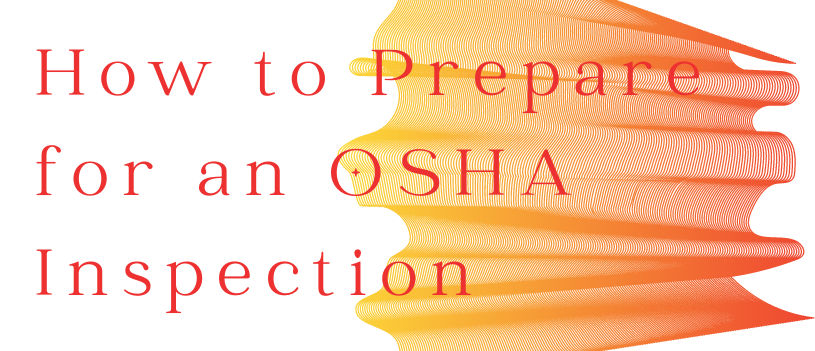An OSHA inspection can be an overwhelming surprise to business owners. A majority of the time, OSHA will attempt to schedule an on-site inspection and will provide employers a notice. However, there may be times when the inspection is unannounced, which is why it is crucial that your business is prepared.
An OSHA inspection can be triggered due to one of your employees getting injured in the workplace, when someone submits a formal complaint or it can be just a programmed wall-to-wall inspection. By being prepared, you will be able to potentially avoid citations.
You should begin with reviewing and updating the required safety plans that you have for your business. The next step is to develop a protocol for responding to an OSHA inspection. Your business should be prepared for the unexpected surprise that an inspector may be coming to your site. If your business is ready for an unannounced inspection then this will help reduce your stress and prepare your staff.
If you receive notification that OSHA would like to schedule an inspection, begin with conducting an internal inspection yourself and identify any outstanding problems that should be corrected as soon as possible. As an employer, you will also need to ensure that the OSHA 300 logs are up to date and that you have Safety Committee minutes available that will be ready to be reviewed by the inspector. Please note that if the inspection is in response to a workplace accident that occurred, then you will need to have your incident reports and related materials (i.e. equipment manuals, lockout protocols, etc.) ready to go.
As an employer, you do have the right to request that OSHA obtain a warrant before entering your premises, however, it is important to note that this decision has pros and cons. For example, it is a pro that you will be able to limit the scope of the inspection and possibly avoid citations that are unrelated to the court-issued warrant. A con to requesting a warrant is that the inspector may become aggravated which can be unfortunate because they may try to maximize the number of violations you receive. Overall, it is important to remember that you and the inspector share the same goal which is to create a safe workplace for your employees.
Once your inspector has reviewed the OSHA 300 logs, they will tour your facility. It is a good idea to choose an employer-representative to participate in the tour. If your workplace is unionized then it is possible that a union representative will be asked to get involved as well. Inspectors may ask your employees and managers questions as they review your business. The employer-representative should take note of all the questions and comments that the inspector makes and should also take photographs or videos of what the inspector takes. If your inspector finds a violation, you should work to get this fixed as quickly as possible. The individual walking with the inspector should not point out possible violations, but instead just correct the issues .
The inspector will also conduct interviews once they have completed their tour. Usually, interviews are performed on site. Employers do have the right to be at management interviews with an attorney present, however, employers do not have the right to be present during employee interviews. As the leadership team is being interviewed, the team should be wary of providing unrequested information. They should simply respond to questions the inspector has and then request a copy of any statement they are asked to sign.
You are allowed to inform employees that they can refuse to sign statements that are prepared by the inspector. OSHA, on the other hand, could issue a subpoena to get employees to cooperate. Generally, inspectors do not take that step unless the case involves a serious injury, death or extreme safety violations.
Lastly, it is important that you have an effective closing conference with the inspector which generally is the final step of the process. During this meeting, the inspector will discuss any standards that have been violated as well as the measures that should be taken. The individual who was chosen as the employer-representative should take advantage of this opportunity and write down as much information as they can during this meeting. This will allow you to have documentation of what needs to be addressed once the inspector leaves.
In conclusion, OSHA inspections do not have to be an overwhelming process for small business owners. As long as you plan ahead and prepare your business for a visit then you will feel ready for the unexpected.
